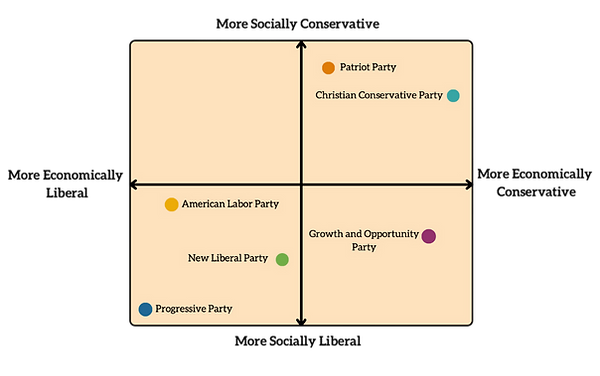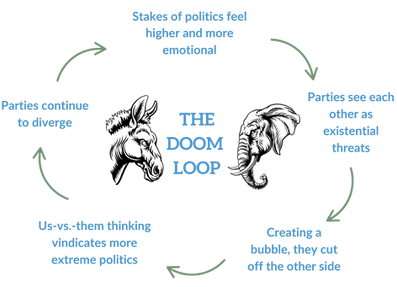BENEFITS OF PROPORTIONAL REPRESENTATION
2023 Economist Democracy Index:
Highest Performing Countries & Their Electoral Systems
PR = Better Democracy
The evidence is in: countries using proportional representation (PR) perform better than countries using winner-take-all elections (WTA). According to the Economist Democracy Index, of the 15 highest-ranked democracies, all but two use some form of proportional representation. Read more below to learn why PR produces a more representative democracy than winner-take-all elections.

There are a variety of reasons why countries using proportional representation have higher functioning democracies.
We’ve broken down PR’s key benefits into four categories.
SELECT A TAB TO LEARN MORE
Parties are vehicles for political representation. We need more than two.

There isn’t a single advanced democracy in the world today that doesn’t rely on political parties… and the vast majority have more than two. But in the United States – and our 50 state legislatures – we have a rigid, fully polarized two-party system that has produced and reinforced a crisis of democratic representation. Political parties are tools that enable voters to organize themselves within our democracy. When there’s only two and both refuse to cooperate with one another, representation for one group comes at the expense of another. In doing so, complex policies are oversimplified and reduced to an us vs. them binary. This leaves voters with only two ways to express their preferences in any given election. But in multiparty democracies with proportional representation, voters have multiple choices, don’t need to resort to selecting the lesser of two evils, and can vote for a party they more honestly align with. More choices for the people brings more power to the people.
Expressing Policy Preferences in Two-Party vs. Multiparty Democracy
Two-Party Political Spectrum:
This multiparty spectrum and it's six parties are fictional and intended to illustrate what political diversity typically looks like in multiparty systems.
Multiparty spectrum and party descriptions from Lee Drutman & The New York Times.

Patriot Party: The party of Donald Trump’s 2016 primary campaign: the coalition of the small town, white working-class Americans who feel left behind by globalism and condescended to by cosmopolitanism. It is economically populist and strongly anti-immigration. Its strongest support among lower-income conservatives comes from exurban America.
Christian Conservative Party: Focused centrally on issues of religious liberty and morality, with very limited government. Finds strongest support among the most politically engaged and affluent, especially men.
American Labor Party: Focused on economic populism, with an appeal to working-class Democrats who don’t have college degrees and don’t follow politics closely. It is more moderate on social and cultural issues compared with the Progressive Party, but also more diverse, appealing to many working-class Hispanics.
New Liberal Party: The professional-class establishment wing of the Democratic Party. Members are cosmopolitan in their social and racial views but more pro-business and more likely to see the wealthy as innovators.
Growth and Opportunity Party: The socially moderate, pro-business wing of the Republican Party. It is the heir to the old moderate “Rockefeller Republican, ” the East Coast wing of the G.O.P.
Progressive Party: Focused on equity and racial justice, with a strong vision of inclusive social democracy. Its strongest support comes from politically engaged, highly educated younger people, especially women.




